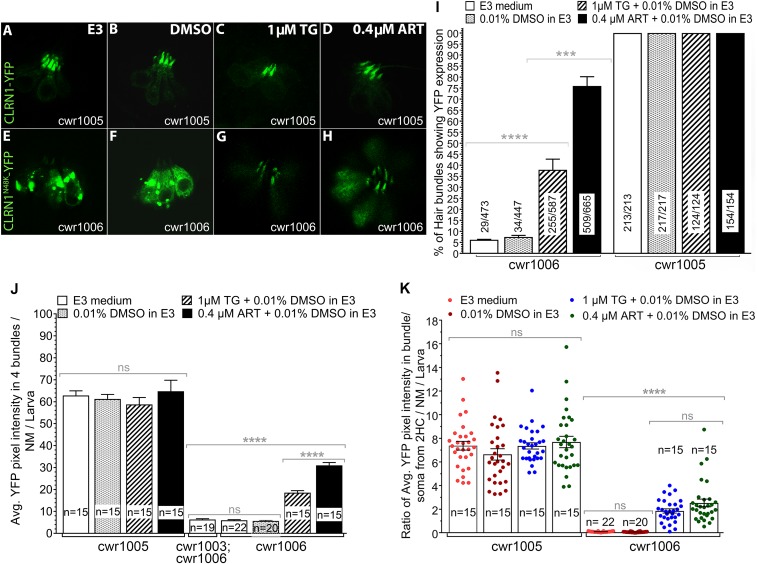Fig. 4.
SERCA inhibitors TG and ART enhance trafficking of CLRN1N48K to the hair bundle. SERCA inhibitors do not affect localization or expression levels of CLRN1 in hair cells. SERCA inhibitors induced release of CLRN1N48K retained in the ER and enhanced trafficking of the mutant protein to the hair bundle. (A–D) Neuromast hair cells from cwr1005 larvae at 4 dpf, and (E–H) neuromast hair cells from cwr1006 larvae at 4 dpf. (A and E) E3 medium. (B and F) Treated with 0.01% DMSO in E3 medium. (C and G) Treated with 1 µM TG. (D and H) Treated with 0.4 µM ART. Images (A–H) were captured from live larvae at 40× magnification. (I) Hair bundle localization of CLRN1 or CLRN1N48K in control and TG- or ART-treated larvae were quantified as a function of YFP intensity in the bundle. In all larvae analyzed, hair cells of the otic and middle neuromasts were considered for statistical analysis. Data represented as a percentage of the number of hair cells expressing CLRN1-YFP or CLRN1N48K-YFP in the hair bundle divided by the total number of hair cells considered for analysis. (J) Quantification of YFP intensity in the bundle from TG- or ART-treated and control groups. (K) Ratio of average YFP intensity in the bundle versus soma quantified from hair cells of the neuromast from TG- or ART-treated and control groups. Data in J and K represent the mean ± SEM. Asterisks indicate statistical significance, and “ns” indicates nonsignificance, one-way ANOVA with Tukey’s multiple-comparisons test: ****P < 0.0001; ***P < 0.001; ns, P > 0.05.

